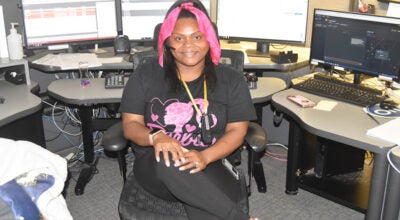LaGrange Academy releases re-entry plan
Published 8:00 am Thursday, July 16, 2020
|
Getting your Trinity Audio player ready...
|
With a little more than a month until Aug. 12, LaGrange Academy is hoping to return to on-campus instruction on their first day of school.
In preparation of the ever-changing effects of the pandemic, the school is also planning for various adjustments and will offer three different learning formats — on-campus learning, adaptive learning and remote learning. The three scenarios were outlined in a 15-page re-entry plan that was distributed to parents on July 9.
“We realize that things are going to change … things might be more restrictive, or we might be able to lighten up on our requirements,” Head of School Brian Dolinger said. “We want to be responsive to the situation as it changes.”
As of July 15, Troup County had 1,802 confirmed cases of COVID-19. The rate of cases per 100,000 people was 2,559.
The on-campus and adaptive learning plans include in-person classes and come with a host of new safety measures. These include:
Mandatory face shields for all students and staff
Frequent disinfection of shared surfaces
Daily temperature scans for all students and teachers
Disabling of touch water fountains
Installation of new air purification system
Maintaining social distance of six feet as much as possible
Avoiding large gatherings
Rearranging furniture and seating to maximize space between people
Avoiding communal supplies
Mandatory hand sanitizing by students and employees upon entry and exit of classrooms
Limiting visitors to the administration building
Closing of cafeteria, with lunch held in classrooms
Elimination of partner vendors selling food on campus
Remote learning will occur if local, state or federal authorities mandate schools to close, or if the school starts to have positive cases emerge, Dolinger said. The school’s Pre-K program is exempted from any government-mandated closure, as it is classified by the state as child care and is an essential service. In that event, small cohorts of 4-5 students would be assigned to a single teacher and not be able to interact with other cohorts.
Adaptive learning is available for students who need to self-quarantine due to exposure to a positive case, or for families who don’t feel comfortable sending their children to school.
“In essence, they’re going to be livestreaming our classes,” Dolinger said of that option.
The school has invested in new audio-visual equipment that allows students to observe and communicate with teachers in the classroom over video. The camera will move as the teacher walks around the room, providing synchronous learning alongside students who are physically present.
Every LaGrange Academy student will have access to a Google Chromebook or Chrome-based tablet. Fourth grade through twelfth grade will be assigned a Chromebook for use at home and in school. Kindergarten through third grade will have access to this technology in class but will also be allowed to take it home if a student needs to use adaptive learning, or if the campus closes and moves to remote learning.
LaGrange Academy had 259 students in the 2019-2020 school year — 134 lower schoolers, 58 middle schoolers and 67 upper schoolers. Dolinger said despite the economic trouble caused by the pandemic, enrollment has remained stable. Some families have reached out about financial hardship, but Dolinger said the school was able to secure additional funds to increase financial aid for affected students.
The school received about $59,000 in funds from the federal CARES Act that Dolinger said was used to purchase new technology and cleaning equipment. The school also received a PPP loan to assist with payroll. The loan was between $150,000-350,000, according to federal data.
Three different zones will be established to keep students of different ages apart: one for pre-K and kindergarten, one for the lower school (grades 1-5) and one for the middle and upper schools (grades 6-12). Dolinger said an outbreak limited to one zone could trigger remote learning for students in that zone, while the rest of the school continues operations.
Face shields will be provided by the school and were chosen because they are less intrusive and can be worn comfortably for longer periods of time. Dolinger said students can wear face masks too, if they want, and that different types of shields and shield-hats will be available.
Dolinger said a handful of parents have expressed interest in opting to keep their children at home, with adaptive learning, but most hope to send their student back to school.
“The vast majority of our parents are supportive of returning to an on-campus learning environment,” Dolinger said.



